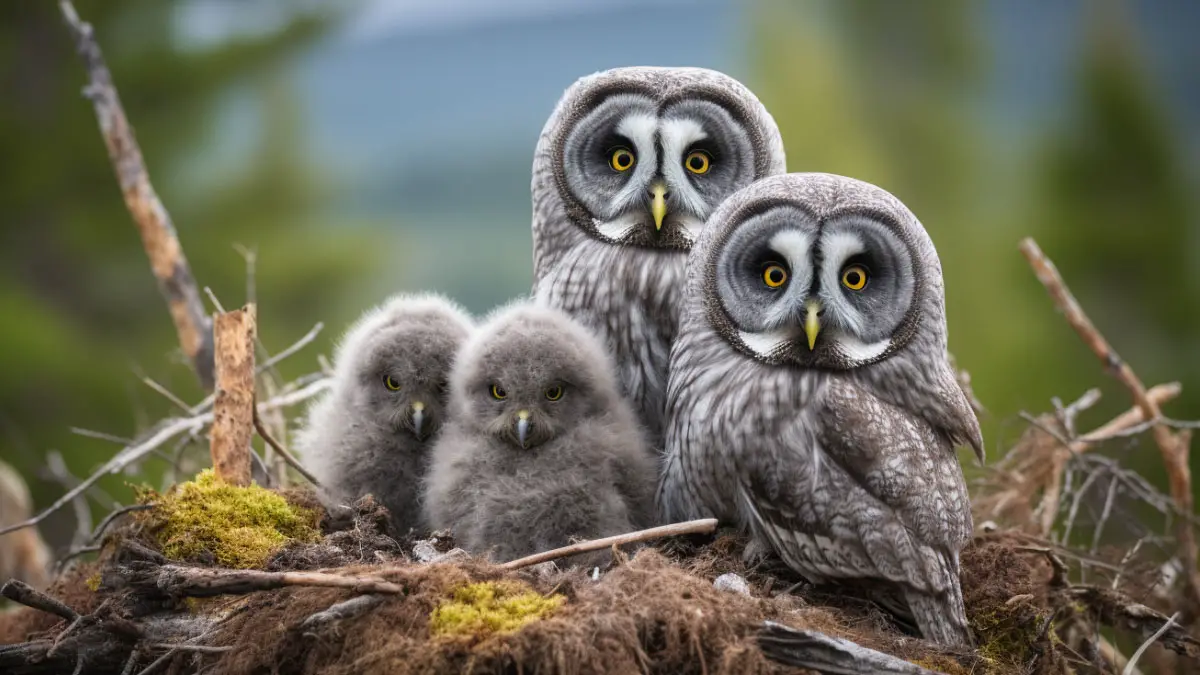Different species of owls have evolved to live in various parts of the world. However, you may not notice them very often. It’s because most of them are nocturnal, and so are not seen during the day.
So, where do owls live? Owls live almost everywhere except for Antarctica. Apart from that, you will find them living in deserts, forests, wetlands, barns, mountains, and also in big cities. They are opportunistic feeders and can adapt to their surroundings to survive.
It is natural to wonder how these birds live in such places. Let’s explore the diversified habitats of owls and how they live in those places.
Where Do Owls Live? Places Where Owls Can Live
There are around 250 owl species available in the world. They are widely diversified in nature. Therefore, they can be seen in almost every country.

Let’s explore the places where owls live mostly.
Owls Live in Forests and Woodlands
Forests are among the common places for birds to live, and so are for owls. Owls prey on small mammals, like rabbits and other rodents, which are available in plenty in forests.
Some owl species also hunt on smaller birds. Besides, woodlands and forests are the ideal places to find enough insects and amphibians. Birds living in forests never run out of food. Therefore, you will find tawny owls, great horned owls, and barred owls in good numbers in such places.

Tundra
Snowy owls mostly live in tundra, and they are a common bird in such places. Snowy owls eat arctic hares and ptarmigan. However, their primary food is lemmings. They also feed on other animals like fish, rabbits, as well as other small birds.
Owls Can Live in Deserts
Deserts are challenging habitats for most birds, but elf owls, barn owls, etc., can survive in deserts, too. In deserts, they usually nest in places where there is some kind of vegetation.
They choose cacti or low bushes for nesting sites. And they choose open spaces for hunting prey. Their diet in desert areas directly reflects the availability of prey.

Owls in Wetlands
Many species of owls also live in wetlands, including marshes and swamps. They build their nests in trees near the wetland. Owls living in such places live on aquatic animals, such as fish, amphibians, and other insects.
Urban Areas
Owls are not rare in urban areas; you just cannot notice them. They take shelter or build nests in park area trees, abandoned buildings, cliffs, and rooftops. You will not notice them if you do not try very hard in your local parks. They hide behind the thick branches for concealment and protection.

How Do Owls Choose Their Habitat?
Owls do not choose their nesting area first. Instead, they look for hunting sites. They search for places where they can hunt their prey easily. They then look for a suitable place for nesting or shelter.

Here are various factors they consider while choosing a place for habitation:
Food availability
Owls select habitats where their preferred prey is abundant, and competition is low. When there are too many owls in one place, some owls tend to leave and look for a new place.
Nesting opportunities
These avians seek habitats that offer suitable locations for nesting. It can be large and thick trees, burrows, cliffs, or other structures like barns, abandoned buildings, etc. In this case, they prefer a place where an open area is nearby to hunt, and they can bring prey to their nests.
Camouflage
Camouflage plays an important role in owls’ protection. It helps them hide from human sight, predators, and from their prey as well.
They choose places where they can naturally blend in and take camouflage. Check this video, and you will be shocked by their ability to take camouflage:
Territorial density
Owls do not like to form large caverns. Therefore, they avoid choosing places where there are already enough owls. Their territorial behavior helps them avoid conflicts and results in success in breeding.
Human disturbance
Though some owl species have adapted to human disturbance to some extent, most of them still prefer places where human traffic is low. Therefore, they are rarely seen in big cities.
Do Owls Migrate?
Owls live everywhere, as we have explored. Does this mean owls do not have to migrate? Well, it depends. There are some owl species that migrate to far distances, while some just move to a new place for some time.
Again, there are owls that do not migrate at all. Barn owls are known for migrating higher than most other owls.
Most owls are comfortable in their natural places. Therefore, they usually do not migrate in winter for a warmer location like most other birds do. Their migration is often called “irruption,” which is influenced by food scarcity, not weather.
Sometimes, owls can migrate to other areas during the breeding season for more food resources and mating. Drastic change in the climate can also influence their migration sometimes.

FAQs
The living habit of owls is an interesting issue to talk about for bird enthusiasts. Here are some more questions you may find helpful.
The best place to find owls is in wooded areas near open habitats. In the daytime, They tend to hide in high and dense tree branches for protection. They can also camouflage behind the bushes and leaves. You will need to look very carefully to notice them.
Owls usually sleep during the daytime, and they can sleep in different places. Most owls sleep in tree hollows, branches, and rocky areas. Some species can also sleep on the ground.
Most owls do not live in rainforests. Spectacled owls are the only owls that live in rainforests permanently. They are adapted to the dense vegetation and varied ecosystems. Mottled owls can also be seen in rainforests.
Conclusion
Owls can adapt to their surroundings and so can live in a wide range of places. You can find them in almost all kinds of places except the Antarctic. Their ability to feed on available food sources helps them live in different places.
Owls can comfortably live in their places as long as enough food source is available. Most of them do not have to migrate either. You should ensure their ecosystem or habitat is not disturbed.








